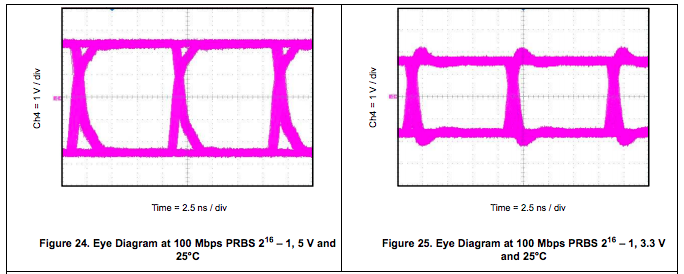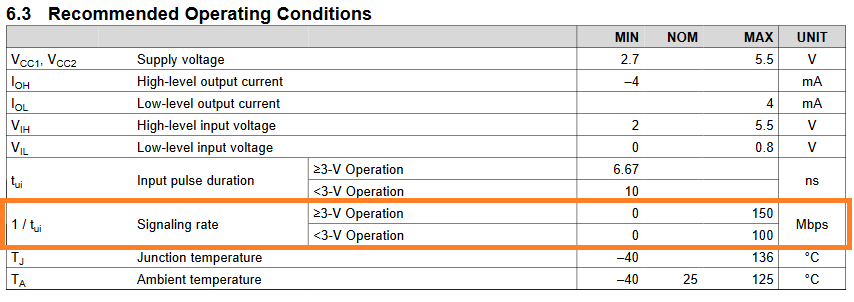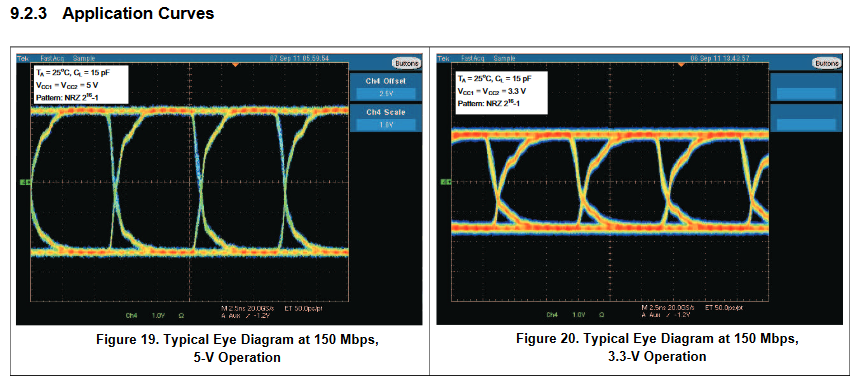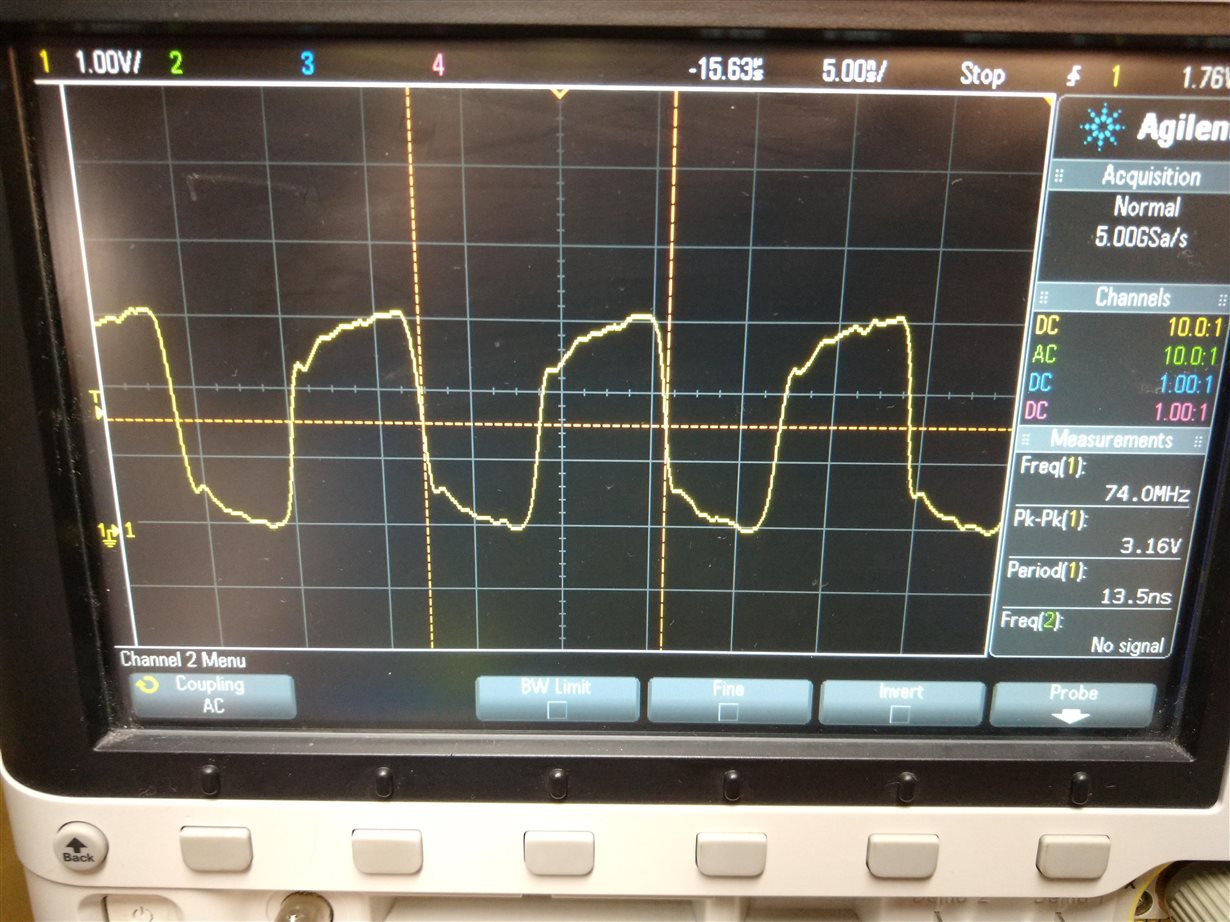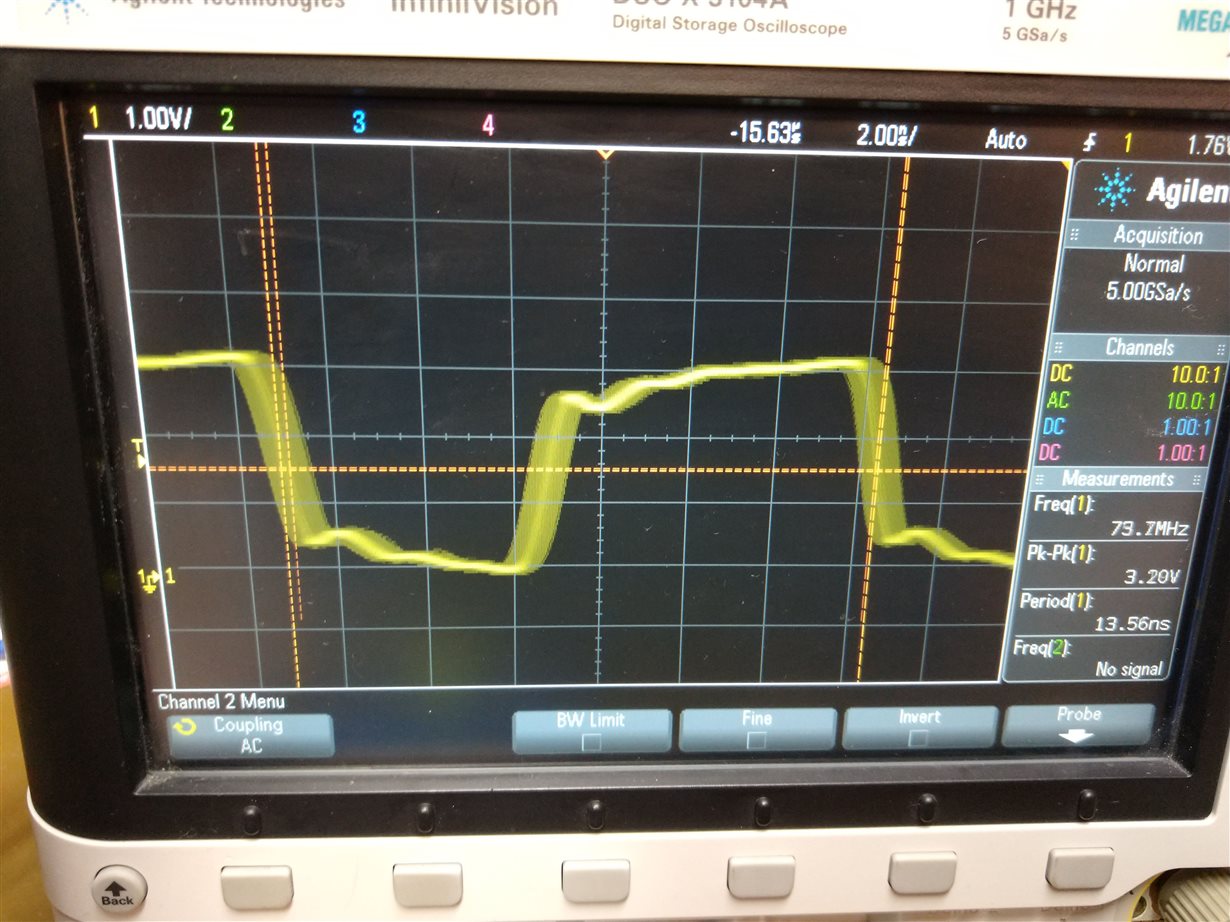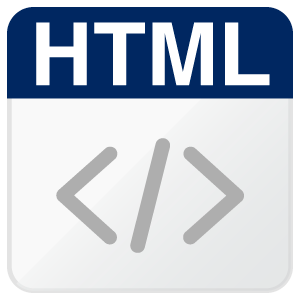Other Parts Discussed in Thread: ISO7640FM, ISO7641FM, TFP410
Hello,
I need to isolate a data bus operating at 148 Mbps in my design. Although the device specification is 100 Mbps, is it possible to achieve the data rate of 148 Mpps without compromising the eye diagram so much?
Thanks in advance,
Rodrigo


